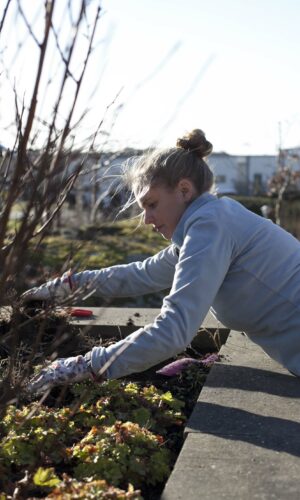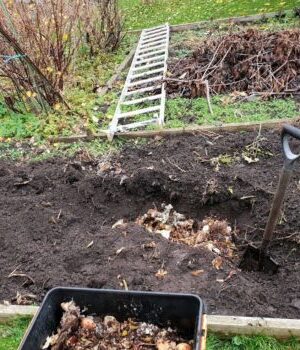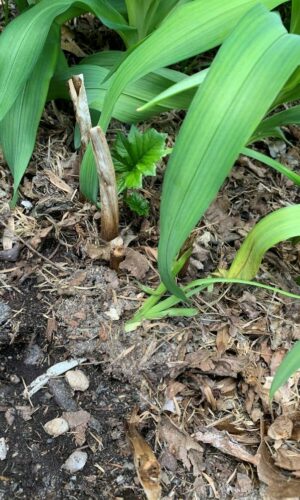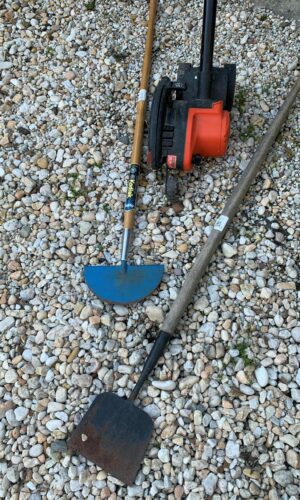Essential Pre-Planting: Cleaning and Edging for a Vibrant Garden
As the true plant lovers we are, we long for warm and welcoming weather and are likely to give in the the first impulse as soon as the sun strikes our eyes – to plant. We want to dig into the soil and slip in new plants or the promise of new seeds. But, before we do that, there are two important chores that should be done first: cleaning and edging. The first will feed your soul; the latter will bring joy to your eyes.
Cleaning Isn’t Drudge Work; It’s Practically A Religious Experience
Like just about everyone, the idea of cleaning doesn’t fill me with great enthusiasm. Of course I love the end result; it’s just the process – or, more to the point, the prospect of cleaning that fills me with dread. But, if you stop thinking about cleaning and just get to it – and get to it in a particular way – you will quickly find that this dreaded chore is really the best part of gardening. And what is that “particular way?”
Low To The Ground And Devoid Of Tools
When I clean out my beds, I like to go old school and get down on my hands and knees and use my hands instead of a rake. I find that this is the most effective, safest (for the plants) and most enjoyable way to clean out the beds. Think about it. You’ve been waiting all winter to get out to the garden, to see how things have fared over the cold months, to look for the emerging tips of plants that have been hiding underground for months, and to be reminded of plants you’ve completely forgotten.
So, there’s nothing quite like being close to the action, to be gently clearing away collected debris and protective mulch with your hands and finding the first shoots of spring popping up underneath. That wonderful amalgam of relief, pride, wonder, and hope that you feel when you uncover those first green shoots is the purest distillation of the joy of gardening you can experience. It’s a joy that must be experienced close-up, where you can take in every detail of the soil and plants and breath in the wonderful scent of warming spring soil. None of that can be experienced at the other end of a long rake handle.
It’s Also A Smart Way To Garden
Using a rake, you’re much too likely to bruise or damage the tender early shoots that are emerging, thereby making them susceptible to pests or infection. And, you’re better able to preserve the valuable organic matter that is so essential to good soil health.
Speaking Of Organic Matter And Soil Health, Let’s Discuss Mulch For A Minute
As you most likely know, it’s critically important to regularly add organic matter to the soil in order to add nutrients, improve texture, and increase water retention. Adding mulch to the surface of your garden topsoil can prevent weed growth, retain moisture in the soil, and maintain more consistent soil temperature. It also makes the beds look neater.
All across the United States (and perhaps around the world) millions of gardeners turn to wood mulch to blanket their garden beds. In some cases it’s shredded wood. In other cases, it’s big chunky blocks of bark. These wood mulches may look neat and have become the conventional standard of beauty for many gardeners, but they are completely unnatural. Think about it. In the forest, what blankets the forest floor and adds organic matter to the soil? It’s certainly not an uninterrupted carpet of chopped up wood and tree bark. It’s leaves.
The same is true for meadows, riverbanks and other native habitats. The soil is enriched by the dead and decaying plant material that grows in the area and completes its natural cycle of growth before returning to the soil. So, why do we smother our garden soil with chopped up wood, a material that takes forever to decay and does little to improve the soil when it does?

The Best Mulch For A Garden Is Leaf Mold
Leaf mold is nothing more than, well, leaves that have been partially composted. They provide excellent organic matter, which improves the texture of the soil, helping it to retain moisture but also to drain properly. The decomposing leaves provide excellent habitat and food for earthworms, whose tunnels aerate the soil beautifully and whose castings provide excellent fertilizer. If you don’t have partially decomposed leaves, don’t worry. Just run your lawn mower through piles of leaves a couple of times in the fall and then spread the fragments throughout your beds. Nature will do the rest.
In the spring, rather than raking all that leafy goodness away and replacing it with shredded wood, just let it be. Let it continue to break down and work its way into the soil beneath. When you’re on your hands and knees becoming reacquainted with your garden, taking stock of what survived the winter and what surprising new things might be popping up, you can also take stock of the condition of your soil, pull out any weeds or stones you might come across, pick out any sticks that may have fallen, and crumble any large pieces of leaf litter you may find.

This Is Truly Intimate Gardening
And, it’s the best kind of gardening there is. It’s the best way to truly understand your plants and soil, to see how large your plants are getting and what may be in need of moving or dividing. You’ll discover struggling shoots of things you planted and had forgotten and you’ll have the opportunity to move them out from under the nearby thug that has been crowding its space and stealing its sun. This spring I discovered a tiny shoot of a Bear’s Breeches plant (Acanthus mollis) popping up from a piece of root that had hitched a ride with a Canna I had transplanted last fall (see photo).
If I hadn’t seen the plant, which can get pretty enormous, it would have quickly started to crowd out everything growing nearby. Surprisingly, rather than feeling overwhelmed that you are working your way across endless yards of open ground one excruciating inch after another, you’ll find yourself completely consumed by the process and completely unaware of time. Trust me on this.

Get Back On Your Feet And Grab A Shovel
When you’re done with the close-up cleaning, THEN you can grab a long-handled tool for your next important chore: edging. Edging garden beds is one of those chores that somehow has fallen into the Nice To Do If You Have Time category, but it truly is a necessary chore if you want to make your gardens look really great. As a matter of fact, a crisp and neat edge defining your planting beds can make a somewhat shabby, somewhat weedy, entirely anemic bed of plants look downright snazzy.
It’s All About The Edges
While I can’t seem to find it in my bookcase, I recall the title of a book I had to buy for a class several years ago, Edges and Boundaries. The whole point of the book, from what I can remember, was that the edges and boundaries of the various elements in the landscape are the most important part of a design. If you want to gently lead the eye, use a graceful and sweeping curve to edge a planting bed. If you want your garden to feel modern and crisp, use lots of straight lines and sharp corners. If you’re trying to convey a feeling of informal exuberance, blur the line between beds and walkways with plants that tumble over and obscure the edge where they meet. As far as that book was concerned (in my backward-looking mind, at least), it made little difference what was planted in those beds. As long as the edges are handled properly, you garden is going to be a winner.
And, you know what? They were kind of right. It’s sort of like when a group of friends or coworkers gamely gets together to poorly sing “Happy Birthday.” No matter how irregular the tempo, with some folks singing like it’s a John Philip Souza military march tune and others singing a funeral dirge, if everyone ends the song with proper enthusiasm, perhaps a few last notes that are harmonized, and a rousing round of applause, the otherwise cringing performance is somehow transformed into a musical tour de force. Such is the power of a well-edged garden. The sharp lines and crisp, clean delineation between lawn and planting bed can somehow transform a scraggly planting and a spotty lawn into a real landscape. You can almost forget about weeding the rest of the bed if you cut a clean strong edge in the front of the garden and yank the weeds a foot behind it.
Tools of the Edging Trade
There are a few ways to edge your beds. The first and most common way is with a simple edging tool, which has a half-moon or rectangular blade at the end of a long handle (see photo). The idea is to create a new garden edge by slicing into the sod by pushing the blade of the tool into the ground with one of your feet. Or jumping up and down manically on the non-budging blade in areas where the soil is compacted, dry and brick-like. These basic edging tools work best in areas where the soil is sandy or damp and free of stones and tree roots. Their greatest drawback is the fact that they don’t allow you to dig very deeply into the soil, which means your edges won’t be very deep and won’t last very long. This is also the problem with electric edgers (also seen in the photo).
While much faster and easier to use than edging tools, the turning blade that cuts into the ground only penetrates an inch or two, which makes it very easy for the lawn to quickly grow back in and mess up your nice neat edge. The best way by far to edge a garden is with a square-edge spade. An edging shovel is simply a straight edged shovel. The longer head of the shovel (versus a short blade on an edging tool) allows you to dig more deeply into the earth in order to create a deeper edge that will help to prevent the growth of grass back into the garden bed. The edging shovel also makes it easier to create a trench along the garden edge, which helps to keep mulch neatly inside the garden. Here’s a video that shows how this works.
Once you clean and edge your beds you’ll be all set to plant. Or, because they’ll be looking so good and you’ll be feeling so Zen, you may just want to sit and admire your good work.


About the Author
Barry Goodinson is an amateur gardener who tends to his Zone 7 garden in southern Delaware on the Atlantic coast of the United States. He has spent his career working with non-governmental organizations focusing on issues such as homelessness, HIV/AIDS, urban green space improvement, and historic preservation. He has an undergraduate degree in philosophy, a master’s degree in public policy and a certificate in landscape design.
Gardenize Plus
With Gardenize Plus you can:
- Use Gardenize on your laptop or desktop computer
- Download your data for free
- Create copies of your own plants
- Save as many plants / areas / events as you want
- Save as many images per plant / area / event as you want
- Draw on pictures Save as many inspirational posts as you want

More from Gardenize
Images published on the Gardenize website belong to Gardenize AB and may not be used without permission.



